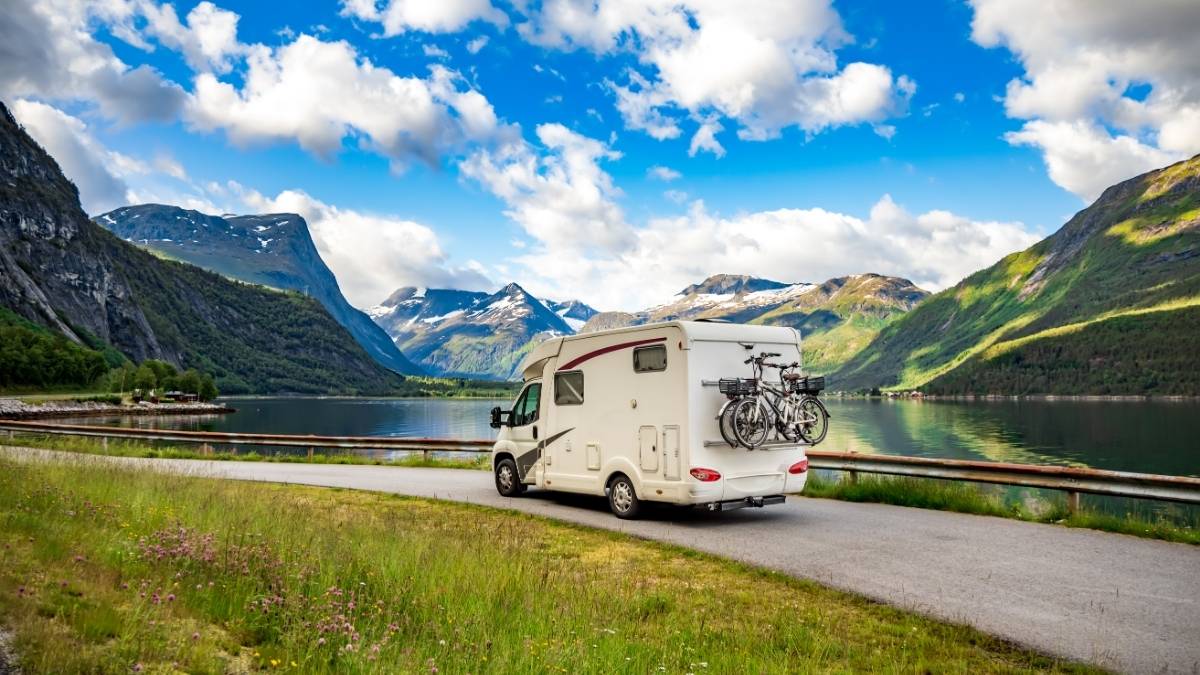In this article, we look at the pros and cons of both campervans and motorhomes. What advantages do campervans have over motorhomes and vice versa? We help you to decide which type of camping vehicle will suit you.
Touring, camping and day trips in a campervan or motorhome is a great way to enjoy holidays, weekends, and leisure time. Owning a camping vehicle has become more popular over the last few years and this has accelerated through the Covid-19 crisis.
Choosing between buying a motorhome or a campervan is often not so obvious, as both are brilliant vehicles to own and each has their particular merits.
In this article, we consider the benefits of each, as well as the drawbacks, to help you decide whether you will become a campervanner or a motorhomer.
Choosing between a campervan and a motorhome
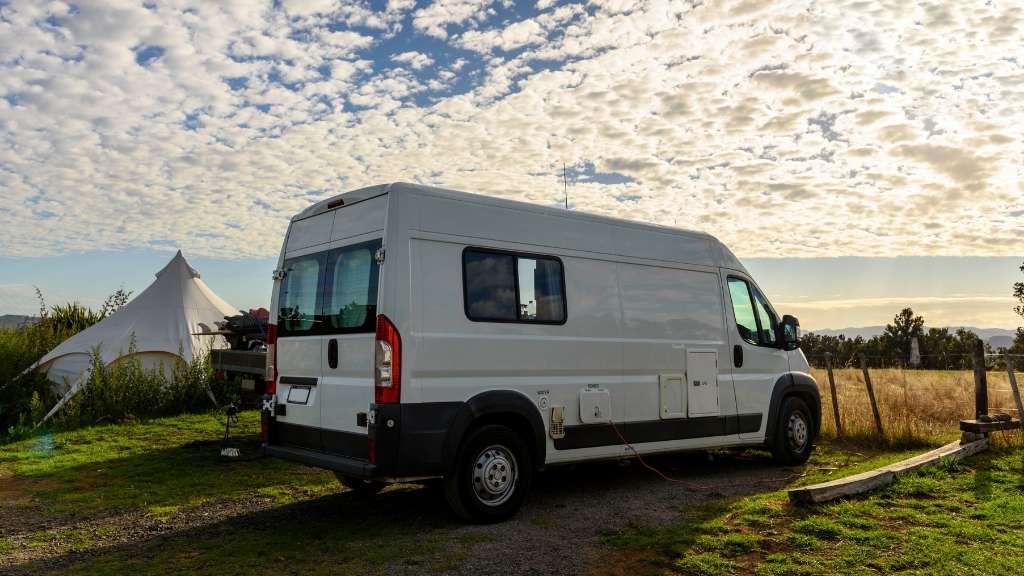
Having our own home-away-from-home on wheels was a dream of ours for a long time. We finally decided on a VW California campervan and haven’t looked back.
There were loads of things that we considered in making our final choice.
In the future, we may move to a bigger van or a motorhome as our situation changes and we have more time to travel further for longer. But, we were selecting for what works for us right now and for the next few years.
We have two primary school-aged children so needed something that seated and slept four comfortably. We also wanted a vehicle which we could use day-to-day so parking at home was important.
Although a VW pop-top campervan was ultimately the right choice for us, it wasn’t clear-cut at the beginning. Just like buying a home, some compromises had to be made.
Whether you should get a campervan or a motorhome will depend of course on your personal circumstances and what you want to get out of your van ownership.
What are the main differences?
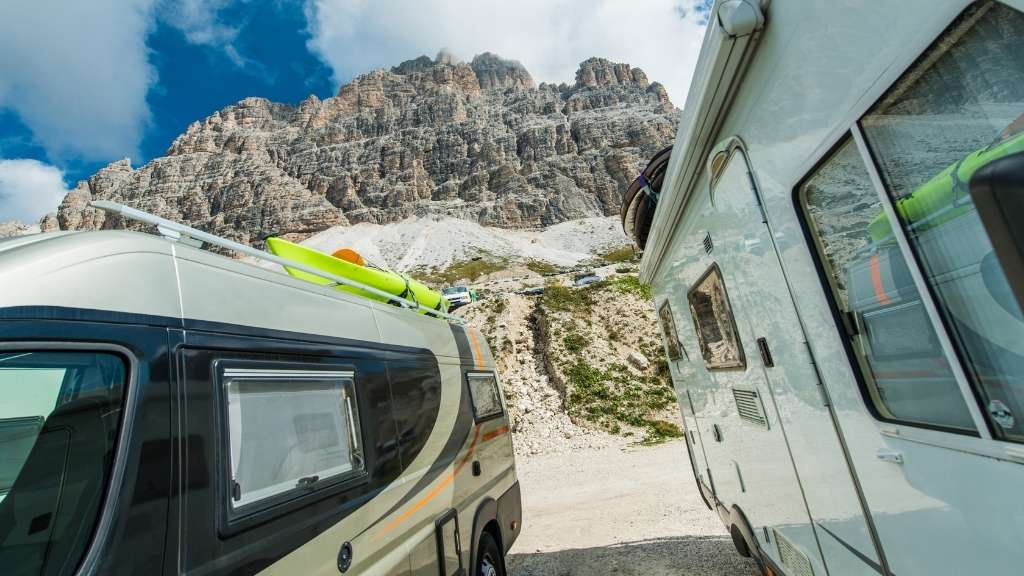
If you want to take a deep dive into what exactly defines a campervan and a motorhome, take a look at our article What is the Difference Between a Campervan and a Motorhome?
Campervan advantages and disadvantages
Campervans are generally smaller and have fewer home comforts than their motorhome cousins. They are built within a van body either as a conversion from a commercial van, or factory-built by the van manufacturer.
Smaller campervans, known as micro-campers, use a car or small delivery van as a base vehicle and sleep two. These are easy to park and have lower fuel consumption but may not suit longer touring holidays.
Van conversions are the type of vehicle most people associate with the term campervan.
They typically have enough comforts to use on camping trips and touring with the benefit of easier parking and day-to-day use than bigger motorhome counterparts. However, limited gear storage and the lack of inbuilt toilet and shower facilities will not suit everyone.
Motorhome advantages and disadvantages
Motorhomes are longer and often wider and are designed to provide a comfortable and spacious environment including built-in washing and toilet facilities.
Motorhomes range in size from 2-4 berth long panel van conversions to American RVs with slideout sides and separate rooms. The typical type of motorhome you’ll see in the UK has a coach-built body mounted on a truck chassis and cab, with berths for 2-6 people.
They are more spacious with a finish and facilities aimed at comfortable living for longer touring and campsite stays. Their larger size brings less flexibility with driving and parking and may require a driving licence for heavier vehicles.
Let’s look at these pros and cons of campervans and motorhomes in more detail.
Driving

If you are not used to driving a larger vehicle, driving a motorhome or campervan can take some getting used to.
Road handling
These vehicles are heavier than cars and this affects their handling on the road, steering, accelerating, and braking.
Motorhomes, being larger than campervans, can often be a less finessed drive in built-up areas but comfortable on the open road. Campervans will often handle well in traffic, similar to driving a large SUV or estate car, and are often suitable as a daily drive vehicle.
Power steering can make a big difference for both types. Without it, each vehicle can feel, unsurprisingly, like the truck or commercial van it is built on. Similarly, an automatic transmission can make for a smoother ride at lower speeds. Some motoring purists (not me) will always prefer a manual gearshift.
Take as many test drives as you can get away with to really appreciate what each vehicle is likely to feel like.
Visibility
Visibility is more limited than a car with windows all around, so mirrors become even more important. On the other hand, a high driving position on the road allows you a much better view of the traffic and the scenery.
Arguably campervans often have better visibility than motorhomes, as they often have a rear window which can be seen through the rear-view mirror. Some coach-built motorhome designs have a body which is wider than the cab, reducing visibility further.
Driving licence
The standard UK driving license category B lets you drive a vehicle up to 3,500kg in MAM (maximum authorised mass), and tow a trailer up to 750kg (provided the combined MAM is under 3,500kg).
Most campervans and many motorhomes are under 3,500kg so you are covered. Even so, it is important to check the specifics of the vehicle and your driving licence before you buy.
To drive a vehicle between 3,500kg and 7,500kg you will need to have a C1 licence. The good news is for UK drivers who passed their driving test before 1997, the C1 category is automatically included.
If you passed your test from 1997 onwards you will have been given category B licence only. To drive larger motorhomes you will need to pass the theory and practical category C1 driving tests.
Parking
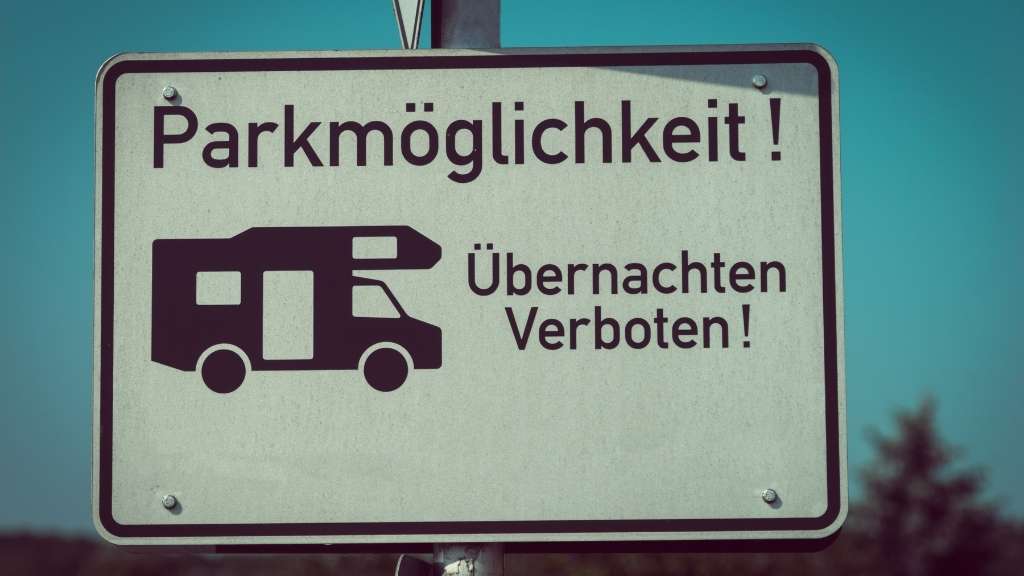
When considering the pros and cons of motorhomes and campervans, parking is an obvious issue.
Motorhomes are generally larger vehicles than campervans, and parking them is a distinct disadvantage.
On a campsite, no problem. Campsite pitches are designed with motorhomes in mind, and all but the largest RVs are able to be comfortably parked.
The footprint of a regular short-wheelbase campervan is similar to a large car and will fit standard parking spaces, albeit sometimes a little snugly. Van conversions of medium and long-wheelbase panel vans are a different matter. You may find yourself parking in the outer reaches of supermarkets car parks across two spaces.
Visiting the supermarket or town centre in a motorhome can cause parking issues. You may have to find generous street parking spaces nearby and walk to your intended destination rather than stubbornly squeezing in.
Height restrictions
Remember there are three dimensions that matter with any campervan or motorhome. As well as length and width, the height is critical when parking. Many a leisure vehicle driver has fallen foul of an overhead height restriction barrier.
Speaking from personal experience, I once forgot that using the bike rack on the back of our van increased the height, and hit a height barrier at an outdoor car park in Staffordshire. Luckily there was no damage to the van, only superficial damage to the bikes, and a mildly bruised ego.
Motorhomes will very often exceed the common two-metre height limit in outdoor and multi-storey car parks, further reducing your parking options.
Camping

These vehicles are, obviously, designed for camping. Let’s look at the pros and cons of campervans and motorhomes when setting up and staying at campsites.
Getting set up
Setting up camp in a motorhome is easy.
After parking and levelling, you need only plug into the electric hookup and perhaps water supply, and you’re done. You may want to set up an awning or annexe for extra space, but these are very much optional.
Campervans are a little more work to get set up at a campsite.
They will commonly have a day mode and night mode setup. Day mode for using the living space as a sitting room and kitchen, and night mode converting seating into beds. Longer wheelbase vans often have a fixed bed which makes things a little easier.
If you have a lot of gear or more than two people you will likely have to use a drive-away awning to store excess gear so that you can set up beds. Pop-top roofs give more head height for living and cooking, and very often have a pull-down bed too.
Sleeping
Of critical importance is how many berths your need.
Campervans are usually designed to sleep 2-4 people. Motorhomes can range from 2-6 berths, depending on the particular design. Giant RVs can often sleep up to 8.
Motorhome beds are designed for home-from-home comfort. They will usually have a fixed double bed or two singles towards the rear, with sprung mattresses.
Additional beds can be above the cab or in the living area, requiring some setting up. Beds made up from seat cushions in the living area are not always comfortable for adults, but for small children they are cosy.
Campervan beds can range from rudimentary ones where you might feel a seatbelt buckle in the wrong place, to sprung bases and super-soft mattresses with memory foam mattress toppers.
Washing and toilet facilities
Inbuilt washrooms typically contain a shower, mini washbasin, and a toilet that can be turned out of the way. They save the need for a late evening dash to the campsite ablution block and are handy when travelling too.
The downside of built-in toilets is that they need to be emptied. The more they are used, the more often a trip to the waste disposal is necessary.
Campervans without toilet/shower arrangements don’t have the waste disposal problem but require a toileting solution when not on a campsite with facilities.
We pack a portable chemical toilet (Porta Potti 335 portable toilet) for longer stays and always carry our fold-up camping toilet (Carplife Bivvy Loo) for on-the-road and overnight use.
To some, campervans feel like camping in a metal tent contrasting with motorhomes that seem like a posh caravan with a motor.
The type of camping experience that suits you will ultimately guide your decision.
Motorhome storage
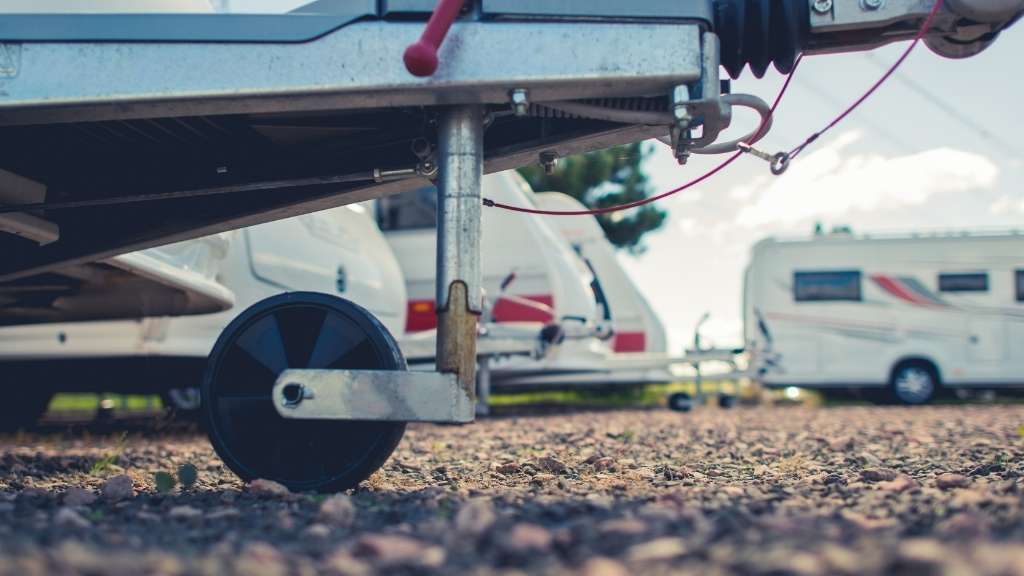
As with parking when in use, storage is an important factor in the pros and cons of campervans versus motorhomes.
Security
An important consideration when we purchased our campervan was parking at home.
Our previous house did not have a driveway and we weren’t keen to leave an expensive motorhome parked on the street. This put us off buying a van until we moved to a house with a suitable driveway.
Although the van is parked on our property we have taken various security precautions to protect it from theft (not telling which).
Winter months
Motorhomes which are not used over the colder months are vulnerable to damage from moisture and freezing. Many motorhome owners will winterise their motorhome to keep it safe while it is not in use.
If your campervan is your daily drive and used regularly then winter storage is less of a problem. Emptying fresh and grey water tanks is still essential to avoid expensive damage from freezing.
Offsite storage
Larger motorhomes may simply not fit inside the property or a garage. Many motorhome owners store their vehicles in offsite storage facilities. These can usually be found in rural areas where the farmer has dedicated open storage or undercover storage for caravans and motorhomes.
Money
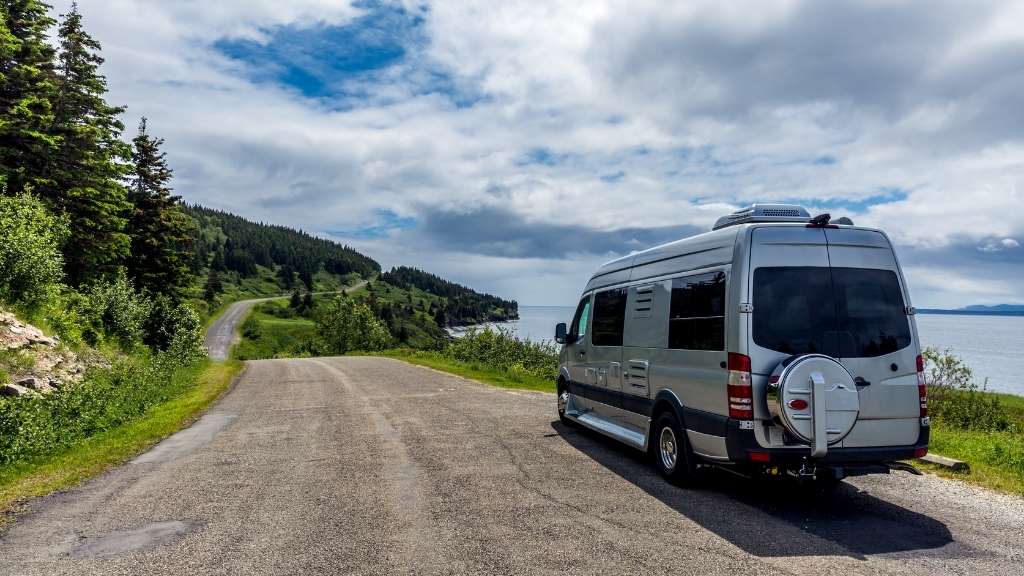
At last, we come to the big one – how much is all of this going to cost you?
Purchase price
Motorhomes and campervans are expensive assets.
A recent model used motorhome will set you back a minimum of £20-£25,000, and the price goes up to well over £100,000. Large American RVs can be as much as £250,000, but to be fair they are like a proper house on wheels.
Campervans are usually a cheaper option. A new conversion on a recent model or new base van will not give much change out of £30,000, but older vans can be picked up more cheaply.
Factory-built campervans such as the VW California and Mercedes Marco Polo start from around the £60,000 price point and go up depending on the options selected.
You also have the option of creating your own campervan. Buy a base van and pay a converter to fit it out or do it yourself and get specialists to do the tricky bits.
A DIY campervan means that you get to select just how much you are prepared to spend. You can even improve the van in stages, spreading out the cost.
Insurance
Oddly enough, insuring a motorhome or campervan is often cheaper than insuring a normal car. Like all insurance, it pays to shop around. Always pay close attention to the level of cover, exclusions, and excesses involved.
Service and repairs
The cost of servicing, repairs, and spare parts can be more expensive than regular cars.
Servicing costs can be higher as you are servicing a commercial vehicle. On the repairs and maintenance side, there is a lot more to break or wear out. Just consider the facilities for cooking, sleeping, bathroom, water, gas, electrics, and so on.
Campervans will often have lower servicing and repair costs than motorhomes. They are smaller vehicles with fewer additions, but it will depend on your vehicle including any warranty requirements.
Fuel costs
Motorhomes are heavier and will generally cost more to run than campervans.
All this depends on the fuel type, engine efficiency, and load that you are carrying. Pay close attention to the manufacturers’ figures and add at least 20% for real-world conditions.
Tax and MOT
Road tax, or VED (Vehicle Excise Duty), applies to motorhomes and campervans just as it does with cars.
The VED system has had several changes over the last decade. Costs will vary depending on the age of the vehicle, fuel type, and emissions. Additionally, a vehicle with an original list price over £40,000 will attract an additional £325 per year for five years.
VED rates were due to change from March 2020 to be in line with commercial vehicle rates. This would have been a very expensive change. Fortunately, this proposal has now been scrapped.
Try before you buy
I highly recommend hiring both a motorhome and a campervan to properly experience what will suit you. We did this on numerous holidays over several years and learned a lot.
How easy was it to drive? Did you sleep well? How was cooking a meal on a two-burner stove? What was it like to drive? What were the best and worst aspects?
Hiring first before you make a very expensive purchase may just save you from making a costly mistake.
You can hire campervans and motorhomes from commercial hire companies, or from private owners. Read about this in more detail in our Guide to Campervan Hire in the UK.
Should you buy a campervan or motorhome?
Now that you’ve gone through the major pros and cons of campervans and motorhomes, there’s a good chance that you know which way you’ll go.
Whether you choose a campervan or motorhome for your camping life, we hope that you’ll enjoy the freedom and flexibility as much as we do.
